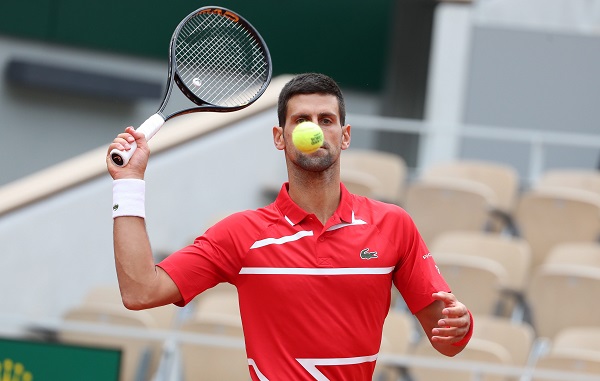The COVID-19 crisis has highlight so many things in tennis that are positive and negative and opened channels of discussion for the future, whether aspects are maintained or whether new concepts are implemented.
One of those matters is electronic line calling and Novak Djokovic raised the issue all over again at Roland Garros, with a slight dig to the incident that resulted in his default at the US Open.
What happened to him at the US Open was all about him and nothing to do with the fact that if there was electronic line calling the out-of-play ball he hit would not have struck a linesperson. His habit of flicking or hitting out of play balls in frustration is not new, he has missed court officials numerous times.
“Maybe you can tell me if there is any significant reason why we should keep other than tradition that we had and have in this sport,” Mr. Djokovic said. “Then I would also probably then have less chances to do what I did in New York.”
It doesn’t have to be a linesperson, one of those struck balls could hit a ball person, or a spectator if it bounced awkwardly. The fact that a linesperson, or the chair umpire might be hit is irrelevant, you are accountable for your actions so any connection with that and bringing in electronic line calling should not, and cannot be, considered.

At the US Open only the main show court the Arthur Ashe Stadium had humans on the lines whereas all the other courts used electronic line calling. Yes, it worked, but is it the way to go?
At Roland Garros there have been a number of questionable calls. The electronic system is not being used and never has. The argument is that the ball leaves a mark on the clay so electronic review systems has not been needed. That is quite different to electronic line calling and players who have been voicing frustration about bad calls need to come to terms with the differences rather than blur the discussion.
There is more of an argument for the electronic review system being used than necessarily the electronic line calling at the clay court events. There is the chance of the wrong mark being considered if a call is questioned or marks on the clay may have been smudged with other ball marks as the chair umpire jumps down from his high chair to check the mark.
Having the review system would bring the clay events in line with tournaments on hard or grass courts. It should be noted that electronic systems were used at a couple of clay events in South America last year.
If the traditions of the game can be enhanced then great, let the sport embrace them. However, should tennis move away from many of its fundamentals and traditions for the sake of it, or remove the human element and start turning the spectacle of the great sport into something that robots might feel at home with?
“With all my respect for the tradition and the culture we have in this sport, when it comes to people present on the court during a match, including line umpires, I really don't see a reason why every single tournament in this world, in this technological advanced era, would not have what we had during Cincinnati/New York tournament,” Mr Djokovic said during Roland Garros.
.jpg)
“The technology is so advanced right now, there is absolutely no reason why you should keep line umpires on the court. That's my opinion. Of course, I understand technology is expensive, so it's an economical issue and a question mark. But I feel like we are all moving towards that, and sooner or later there is no reason to keep line umpire. Yes, ball kids, of course, ball person, yes, but line umpires, I don't see why anymore, to be honest.”
Well maybe the question needs to be asked, if there are no lines people where are the chair umpires going to come from? They start their careers as lines people, so it is fundamental to have that human input and development.
Tennis has lost too many traditions already so to also maintain the human element with lines people on court is important. It should also be remembered that players are notoriously poor in challenging correctly. In the majority of calls challenged by a player, it is the linesperson who has got the original call correct.
The electronic challenge system enhances tennis but even that is not absolute, it is not 100% accurate. Furthermore, the electronic challenge system is not used on every point but to have electronic line calling, that is also not likely to be 100%, but will be used for every point played, could very well be more frustrating than its worth.






